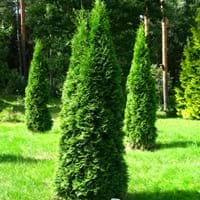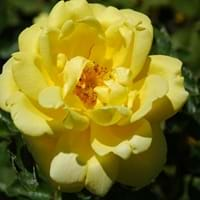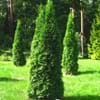Life Span
Perennial
Perennial
Type
Needled or Scaled Evergreen
Perennial
Origin
Northeastern United States, Mid-Atlantic United States, Southeastern United States, North-Central United States, Central United States, Canada
Hybrid origin
Types
Not Available
Not Available
Habitat
Forests, gardens, Roadsides
gardens, Pastures, Prairies, Terrestrial, Tropical regions
USDA Hardiness Zone
3-7
3-8
Sunset Zone
A2, A3, 1a, 1b, 2a, 2b, 3a, 3b, 4, 5, 6, 7, 8, 9, 15, 16, 17, 21, 22, 23, 24
1a, 1b, 2a, 2b, 3a, 3b, 4, 5, 6, 7, 8, 9, 10, 11, 12, 13, 14, 15, 16, 17, 18, 19, 20, 21, 22, 23, 24
Habit
Pyramidal
Oval or Rounded
Flower Color
Non Flowering Plant
Not Available
Flower Color Modifier
Bicolor
Not Available
Fruit Color
Green, Light Green
Non Fruiting Plant
Leaf Color in Spring
Dark Green
Not Available
Leaf Color in Summer
Dark Green
Not Available
Leaf Color in Fall
Olive, Dark Green
Not Available
Leaf Color in Winter
Dark Green, Brown, Black
Light Green
Leaf Shape
Compound
Pinnate
Plant Season
Spring, Summer, Fall, Winter
Summer, Fall
Sunlight
Full Sun, Partial Sun
Full Sun, Partial Sun
Type of Soil
Clay, Loam, Sand
Loam, Sand
The pH of Soil
Acidic, Neutral
Acidic, Neutral
Soil Drainage
Average
Well drained
Bloom Time
Spring
Early Summer, Summer, Late Summer, Early Fall
Tolerances
Drought
Drought
Where to Plant?
Ground
Ground, Pot
How to Plant?
Seedlings, Vegetative Reproduction
Grafting, Stem Planting, Transplanting
Plant Maintenance
Medium
Medium
Watering Requirements
Average Water Needs
Form a Soil ring to water efficiently, Requires regular watering, Water twice a day in the initial period, Water when soil is dry
In Summer
Lots of watering
Lots of watering
In Spring
Moderate
Moderate
In Winter
Average Water
Average Water
Soil pH
Acidic, Neutral
Acidic, Neutral
Soil Type
Clay, Loam, Sand
Loam, Sand
Soil Drainage Capacity
Average
Well drained
Sun Exposure
Full Sun, Partial Sun
Full Sun, Partial Sun
Pruning
Prune if you want to improve plant shape, Remove deadheads, Shape and thin as needed
Prune if you want to improve plant shape, Remove damaged leaves, Remove dead leaves, Remove deadheads, Shape and thin as needed
Fertilizers
All-Purpose Liquid Fertilizer
All-Purpose Liquid Fertilizer, organic fertlizers
Pests and Diseases
Pests and diseases free
Aphids, Bacterial Diseases, Mites, Slugs
Plant Tolerance
Drought
Drought
Flower Petal Number
Single
Not Available
Edible Fruit
No
Not Available
Fragrant Bark/Stem
Yes
No
Foliage Texture
Fine
Not Available
Foliage Sheen
Matte
Not Available
Attracts
Bees, Birds
Not Available
Allergy
no allergic reactions
no allergic reactions
Aesthetic Uses
Beautification, Landscape Designing
Beautification, Bouquets
Beauty Benefits
Not Available
Not Available
Environmental Uses
Air purification
Air purification
Medicinal Uses
No Medicinal Use
No Medicinal Use
Part of Plant Used
Wood
Flowers
Other Uses
Showy Purposes
Showy Purposes, Used as Ornamental plant
Used As Indoor Plant
No
No
Used As Outdoor Plant
Yes
Yes
Garden Design
Hedges, Screening, Wind Break
Container, Cutflower, Feature Plant, Foundation, Mixed Border
Botanical Name
THUJA occidentalis 'Techny'
ROSA 'Allgold'
Common Name
White Cedar
Floribunda Rose
In Hindi
Techny Arborvitae
रोजा allgold
In German
Techny Lebensbaum
rosa Allgold
In French
Techny Arborvitae
rosa TousPlaqué
In Spanish
Techny Arborvitae
rosa allgold
In Greek
Techny Arborvitae
rosa allgold
In Portuguese
Techny Arborvitae
rosa allgold
In Polish
Techny Tuja
rosa allgold
In Latin
Techny Arborvitae
Rosa allgold
Phylum
Pinophyta
Not Available
Class
Pinopsida
Not Available
Family
Cupressaceae
Rosaceae
Clade
Dicotyledonous
Angiosperms, Eudicots, Rosids
Tribe
Not Available
Not Available
Subfamily
Not Available
Rosoideae
Number of Species
Not Available
Season and Care of Techny Arborvitae and Floribunda Rose
Season and care of Techny Arborvitae and Floribunda Rose is important to know. While considering everything about Techny Arborvitae and Floribunda Rose Care, growing season is an essential factor. Techny Arborvitae season is Spring, Summer, Fall and Winter and Floribunda Rose season is Spring, Summer, Fall and Winter. The type of soil for Techny Arborvitae is Clay, Loam, Sand and for Floribunda Rose is Loam, Sand while the PH of soil for Techny Arborvitae is Acidic, Neutral and for Floribunda Rose is Acidic, Neutral.
Techny Arborvitae and Floribunda Rose Physical Information
Techny Arborvitae and Floribunda Rose physical information is very important for comparison. Techny Arborvitae height is 300.00 cm and width 150.00 cm whereas Floribunda Rose height is 60.00 cm and width 90.00 cm. The color specification of Techny Arborvitae and Floribunda Rose are as follows:
Techny Arborvitae flower color: Non Flowering Plant
Techny Arborvitae leaf color: Dark Green
Floribunda Rose flower color: Not Available
- Floribunda Rose leaf color: Not Available
Care of Techny Arborvitae and Floribunda Rose
Care of Techny Arborvitae and Floribunda Rose include pruning, fertilizers, watering etc. Techny Arborvitae pruning is done Prune if you want to improve plant shape, Remove deadheads and Shape and thin as needed and Floribunda Rose pruning is done Prune if you want to improve plant shape, Remove damaged leaves, Remove dead leaves, Remove deadheads and Shape and thin as needed. In summer Techny Arborvitae needs Lots of watering and in winter, it needs Average Water. Whereas, in summer Floribunda Rose needs Lots of watering and in winter, it needs Average Water.





